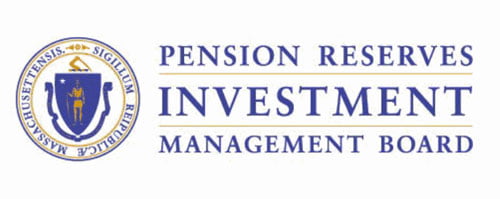Managers Overseeing $70.7 Billion Fund From Homes
Colin A. Young, State House News Service
BOSTON, APRIL 22, 2020…..The state pension fund is confident that, despite the volatility that has rocked financial markets over the last six weeks or so, it will have no problem paying out roughly $1.3 billion for pension benefits this year.
Managers Overseeing $70.7 Billion Fund From Homes
Colin A. Young, State House News Service
BOSTON, APRIL 22, 2020…..The state pension fund is confident that, despite the volatility that has rocked financial markets over the last six weeks or so, it will have no problem paying out roughly $1.3 billion for pension benefits this year.
The Pension Reserves Investment Management Board’s Investment Committee held a special meeting via Zoom and conference call Wednesday after PRIM received a “large volume of inquiries” about the fund’s performance during the first quarter, which closed at the end of March, Executive Director Michael Trotsky said.
Trotsky talked the committee through some of the current market conditions and how his team has adjusted to working remotely and managing a $70.7 billion state pension fund through uncertain times. He stressed that the Pension Reserves Investment Trust Fund is “not facing liquidity stress as a result of the recent volatility.”
“The PRIT Fund’s annual liquidity needs are relatively low compared to the size and liquidity of the fund. We draw approximately a billion-three [$1.3 billion] annually to pay benefits and we are easily able to meet all of those commitments,” Trotsky said. “So if [Deputy Treasurer and Executive Director of the State Retirement Board] Nick Favorito is on the line listening, and I’m sure you are, we feel confident that we’ll continue to have no problem paying pension benefits.”
The retirement funds of state employees, teachers and many municipal employees in Massachusetts are invested through PRIM.
The fund shed 9.9 percent during the first quarter, Trotsky said, adding that it was a better performance than the return on a 60/40 mix of stocks and bonds, and the S&P 500.
For the year ending March 31, he said the fund was down 1.1 percent but performed “substantially better than the traditional 60/40 mix of stocks and bonds.” The fund’s 3-, 5- and 10-year returns all remain above their benchmarks, Trotsky said.
“The PRIT Fund is a carefully constructed, broadly diversified portfolio that we expect will perform well over the long-term. It has consistently performed strongly in both up, and perhaps more importantly, down markets,” Trotsky said. “The March quarter, although it was challenging, was no exception to the rule. We performed strongly. The fund fared better than its benchmark and fared better than the financial markets.”
Part of the reason the fund has fared better than others, Trotsky said, has to do with the decision of fund managers to reduce its global equity allocation from a midpoint of 50 percent five years ago to a midpoint of 39 percent now and the addition of certain risk mitigation strategies over the last couple of years.
“Global equities and our exposure to global equities are among the most volatile among anything we own,” he said.
There were no votes taken at Wednesday’s meeting, but Trotsky said Investment Committee members should be prepared to vote on investment recommendations at their May 5 meeting.
During the ongoing pandemic, all PRIM employees are working from home and there have been no disruptions to PRIM’s operations, Trotsky said. PRIM has been in touch with all of its investment managers and there have been no significant disruptions to PRIM operations.
Trotsky said a PRIM employee tested positive for COVID-19 in mid-March but has since recovered and is back to work. Trotsky said that employee was part of Wednesday’s virtual meeting.
He also noted that the Legislature has been “keeping close tabs on us at PRIM” through the pandemic and financial market gyrations.
During Wednesday’s Investment Committee meeting, Trotsky displayed a chart that showed the “unprecedented sharp decline” in the S&P 500 over the last nearly two months and put it in context with the Great Depression in 1929, a 1987 market selloff and the 2008 global financial crisis.
In 21 trading days, the market was down 34 percent, he said. In 2008, it took 126 trading days for the S&P 500 to drop 46 percent and during the Great Depression the market sold off 48 percent over approximately 55 trading days. Trotsky said the average duration of “peak to trough” since the Great Depression is 20 months, “not 20 days like we’ve just had,” and that the average selloff has been 40 percent.
“So far, the selloff has been faster and not as deep as most other recent downturns and the recovery also has been much faster. But it’s not over. What’s also interesting is that the rebound this year from the March 23 lows, only a month ago, has been very sharp — a classic V-shaped rebound, so far,” he said. “It’s important to realize that the future is still very uncertain and, judging from the last two days in the markets, it’s very clear that this correction and volatility may not be over.”
-END-
04/22/2020



